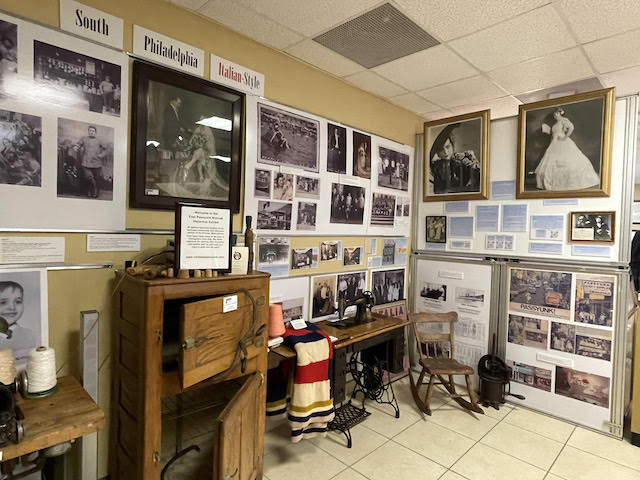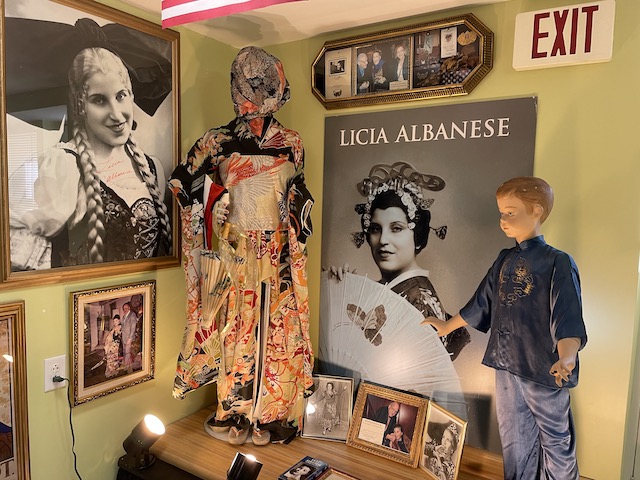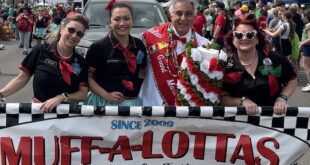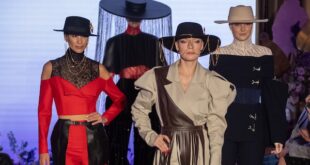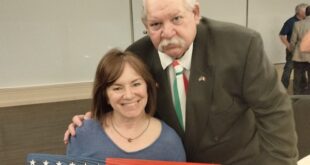A native of Brooklyn, Michael Bonasera has invested countless volunteer hours in the creation and running of the History of Italian Immigration Museum in Philadelphia.
Michael Bonasera is the designer, builder and curator of the History of Italian Immigration Museum in Philadelphia. A mechanical engineer by trade, Bonasera, 69, has poured thousands of volunteer hours into the museum, which is part of Filitalia International, a nonprofit that promotes and preserves Italian heritage, language and customs throughout the world. He spoke with Fra Noi about how he started the museum, its mission and how it has evolved over the last decade.
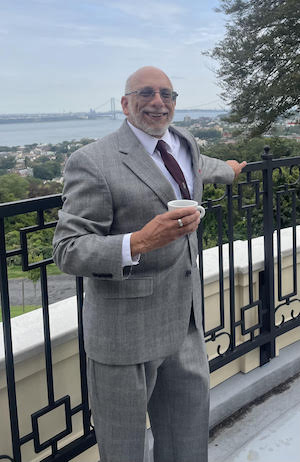 Elena Ferrarin: Tell us about your upbringing and your Italian roots.
Elena Ferrarin: Tell us about your upbringing and your Italian roots.
Michael Bonasera: I grew up in an Irish and Italian neighborhood, Bay Ridge, in Brooklyn, New York, near the Verrazzano Bridge (although back then there was no bridge). Both of my parents and grandparents are of Sicilian descent, I am 100% Sicilian. My parents spoke to each other in Italian when they didn’t want us kids to know what was going on. My father was a brilliant man and instilled in us the love for Italian culture.
EF: What was your professional journey like?
MB: I went to a Catholic grammar school and then to a trade school called Aviation High School, a public school in New York with a very military-based discipline. We learned about aircraft and maintenance, cool things that I was interested in. I worked as an aircraft mechanic for a couple years, then I went back to school for a mechanical engineering degree. In my career, I worked in automation and design for many large companies, like General Electric and AMP Inc. I retired at 61.
EF: How did you come to create the History of Italian Immigration Museum?
MB: When we moved to the Philadelphia area, I discovered Filitalia through Sal Rosati, an auto mechanic who had a muffler system for my Triumph Spitfire and who let me go without paying him because my credit card would not go through. I couldn’t believe it. The next morning, I brought cash and then a friendship developed. He introduced me to Filitalia and I met so many people, mostly first-generation Italians, who reminded me of my grandparents. I joined around 2004. Then I became a board member and at one point, the founder of Filitalia came back from a road trip in Italy with the idea of starting the museum. I was running for reelection (to the board), so I made that part of my platform. At first there was the idea to start small in the basement, but I was vehemently opposed to having a museum in the basement. So, we opened it on the first floor of the building, which is dedicated to Filitalia headquarters but had a lot of room. It took nine months to build the museum. We had the opening on June 1, 2014, the first Sunday in June, an important date because Filitalia sponsored a block party and closed off the street in honor of Italy’s Festa della Repubblica (celebrated in Italy on June 2). Now I am on the board of the Filitalia Foundation as the representative of the museum.
EF: What can people expect to see at the museum?
MB: When you start at the New World, it’s about the great explorers and there is a great map. Then you walk around to the Early National period and the Declaration of Independence. Then the mid-19th century, with the artisans, painters and sculptors, mostly from northern Italy, that helped build the American infrastructure. Then the exhibits move away from being static. You have the Great Arrival, and you can see kitchen utensils, an old icebox, a sewing machine, a barbershop — all the wonderful things that have the stories associated, the reasons for people coming from southern Italy and Sicily. Then it goes to the genealogy section, and then it’s the American Dream section, where we celebrate notable Italian individuals — like Joe DiMaggio, Enrico Caruso and many more — who have accomplished great things, largely because of the sweat and efforts of the previous generation, the parents and grandparents.
EF: On the museum’s 10th anniversary in June, there will be a temporary exhibit, titled “Coming to America,” from Italian-American artist Bill Castello. Are you excited about it?
MB: Very. It is a very big timeline banner, 12 feet in length by 2.5 feet in height, that traces back immigration from the time of Native Americans through future projections for 2050 and beyond. It includes many ethnicities and national origins. Two large sections provide vital information concerning Italian explorers and the contributions of Italian immigrants in North America.
EF: What else does the museum offer?
MB: We have volunteers, about 10 people who participate in various roles. We have tour groups for elementary, high school and college students, and we want to further expand that. There are initiatives in this current Filitalia administration to try to focus on that, because that is what we are all about. We are trying to share the heritage and share the story (of Italian immigration), and what better way to do that than having 30 people show up and give them an education? We recently got an exhibit about St. Frances Cabrini after Cabrini University (in Radnor, Pennsylvania) approached us, because the librarians have all her archive material.
EF: Your wife, Wanda, also was part of the creation of the museum. The two of you will be celebrating a big milestone this year, right?
MB: Yes, this year in August will be our 30th anniversary. We met on a religious retreat for separating, widowed and divorced people through the Catholic Church. We both had a 14-year first marriage, we were both divorced and we both came with two children apiece. We live in Carlisle, Pennsylvania, about two hours from the museum.
EF: How often are you at the museum?
MB: I do more remote work now, but I am there as often as I have to be to build something. For example, when we acquired the Enrico Caruso exhibit from the Enrico Caruso Museum in New York (which closed), we inherited the home theater that has a dozen seats from an old theater in Brooklyn, the Loew’s 46th Street Theatre. The seats were reupholstered by the Enrico Caruso Museum owner. When we put them into our museum, I needed to build a 12-by-7-feet base for them, because the basement has tile floors.
EF: How long will you continue curating the museum?
MB: I will continue as long as I can. I enjoy it, especially communicating with all the various people involved. It’s really cool. We also are doing new things: We have QR codes in the exhibits, so people can link to narrated and video sections. We will have more QR codes in the future. One of the videos I wanted to put out was about the early explorers, Lewis and Clark, who used a Girandoni air rifle, built by an Italian (Bartolomeo Girandoni). It made no noise and shot about 20 rounds. The originals cost thousands of dollars, but we have a replica on display that was built by a guy who makes them out of a 3D printer. He sells them at $300, but he donated one to us. That’s a nice thing.
The above appears in the March 2024 issue of the print version of Fra Noi. Our gorgeous, monthly magazine contains a veritable feast of news and views, profiles and features, entertainment and culture. To subscribe, click here.
 Fra Noi Embrace Your Inner Italian
Fra Noi Embrace Your Inner Italian


